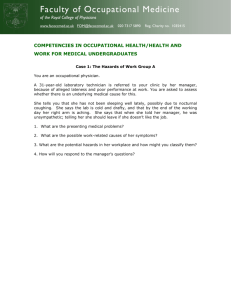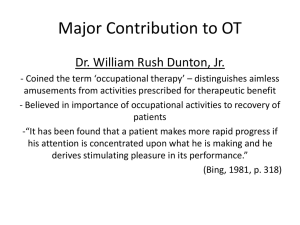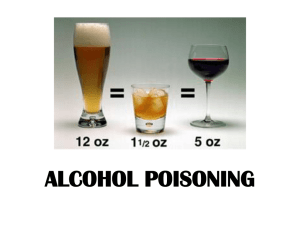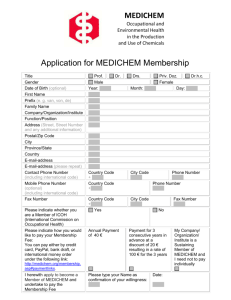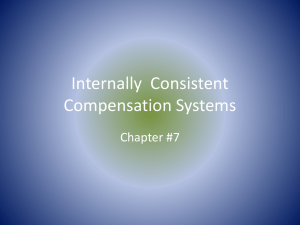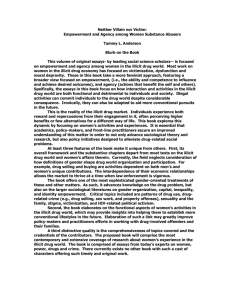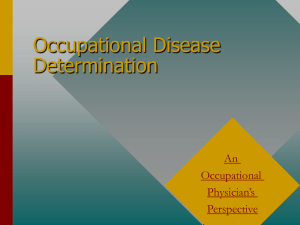Under the Influence - ASC Cortland: Auxiliary Services Corporation
advertisement
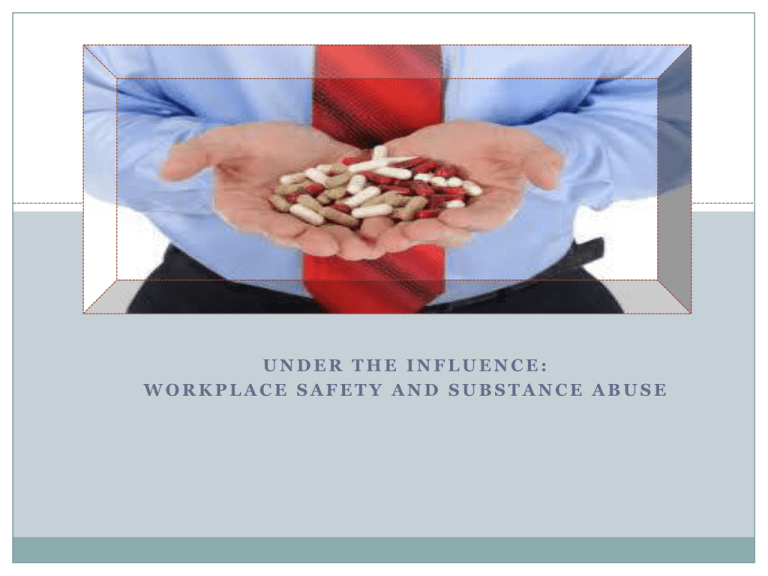
Under the influence UNDER THE INFLUENCE: WORKPLACE SAFETY AND SUBSTANCE ABUSE Statistics More than 6 percent of the population over 12 years of age (13.9 million people) has used drugs within the past thirty days. Rates of use remain highest among persons aged 16 to 25–the age group entering the work force most rapidly. Statistics More than 14 percent of Americans employed full- and part-time report heavy drinking, Five or more drinks on five or more days in the past 30 days. Of the 11.2 million heavy drinkers in 1997, 30 percent (3.3 million) also were current illicit drug users. Occupational Statistics - Alcohol The occupational categories with above-average rates of heavy alcohol use: construction(15.7%) machine operators and inspectors (13.5%), transportation and material movers (13.1%), precision production and repair workers (13.1%) food preparation, including wait staff and bartenders (12.2%) Occupational Statistics – Illicit Drugs Construction workers (15.6%) Sales personnel (11.4%) Food preparation, wait staff, and bartenders (11.2%), Material handlers, helpers, and laborers (10.6%,) Machine operators and inspectors (10.5%) Protective service workers reported the lowest rate of current drug use (3.2%).4 Statistics 73% all current drug users aged 18 and older (8.3 million adults) were employed in 1997. Statistics More than 60% of adults know people who have gone to work under the influence of drugs or alcohol. *According to a national survey conducted by the Hazelden Foundation, Work-related Signs frequent disappearances from the work site work performance that alternates between high and low productivity poor job performance abnormal fluctuations in concentration and energy dishonesty and theft (arising from the need to maintain an expensive habit). poor attendance multiple accidents Personal Signs progressive deterioration in personal appearance sudden mood changes a tendency to become confused unusual irritability or aggression a deterioration in relationships with colleagues, customers, or management Legal Warning All the signs shown above may be caused by other factors, such as stress, mental health issues, medical conditions or side effects to legally prescribe medications Terminations for other reasons Employees who use drugs and alcohol on a consistent basis might be able to hide the physical effects of their use. Absenteeism, poor performance, and work-related confrontations They are usually terminated or reasons other than those of direct drug use Business Reasons Keep your managerial actions based on business reasons, not suspicions or hear say Don’t ignore or fail to look further based on warning signs or hear say Specific Incident Supervisors and Managers may send home, pending an investigation, an employee who is a danger to themselves or others, at anytime. Possible under the influence: smell of alcohol slurring speech red eyes abnormal pupils actions are erratic, violent, threatening unable to perform their duties safely Get a second supervisor or manager to verify that they also observed these things. Do not involve non-supervisory employees. Attendance or performance problems are usually less subjective and do not required verification. Contact University Police if needed Sending Home After the investigation, it will be determined if the suspension is with pay or without and if documentation is place in their file or terminations. If you are sending someone home that appears unable to drive, please offer to call someone to pick them up or call a cab. ASC, supervisors, and managers may be personally (your bank account) liable, if you do not take some steps to prevent this person from injuring someone else because they are impaired behind the wheel of a vehicle. The cost of a cab ride is worth avoiding the risk. What would you do? 1. You come upon an employee who is disoriented and smells of alcohol. 2. Employees tell you that other employees are using or selling drugs in the work facility. 3. You see one of your drivers at an area restaurant during the workday having a beer with friends at lunch.

